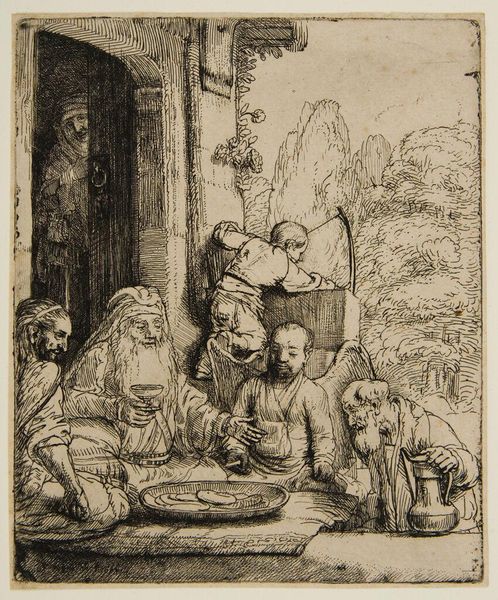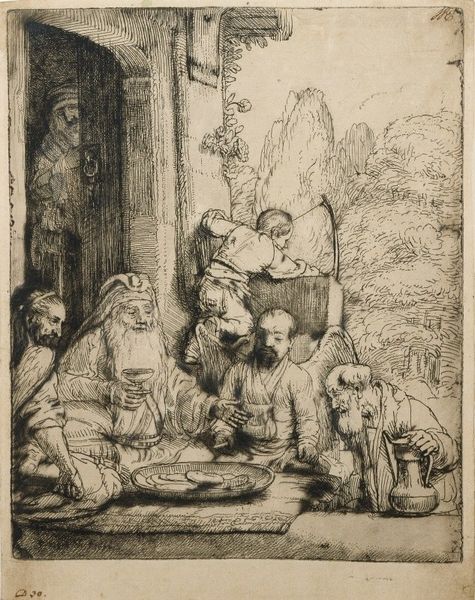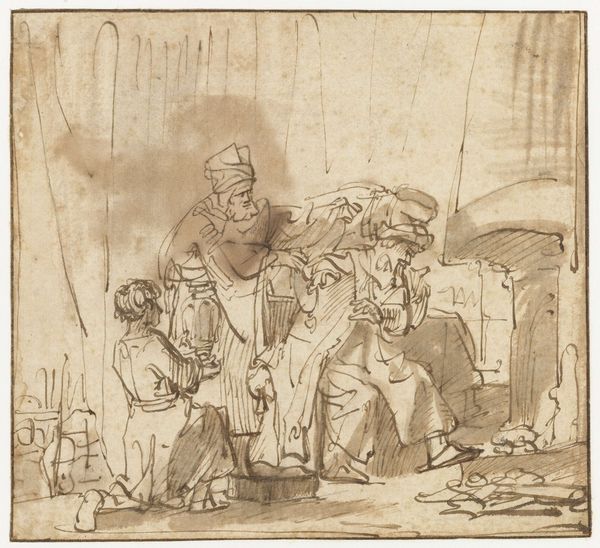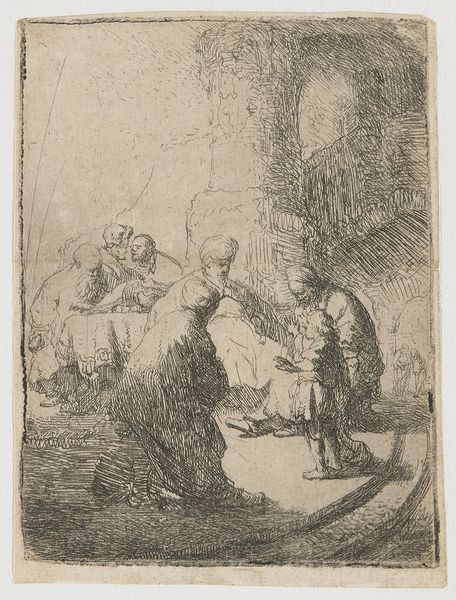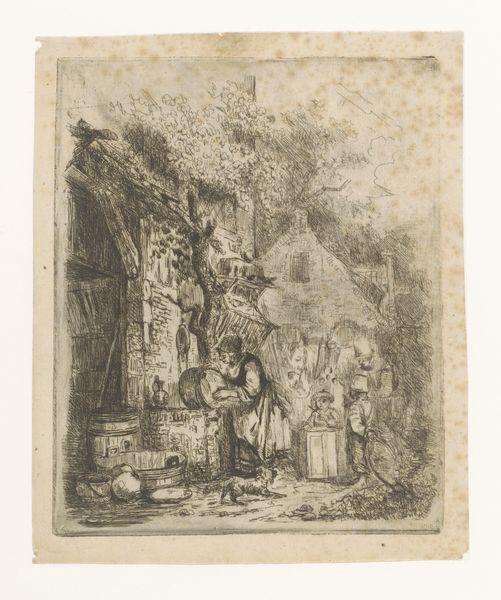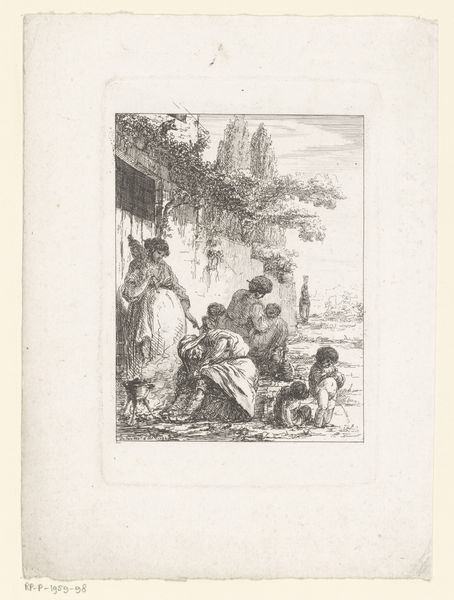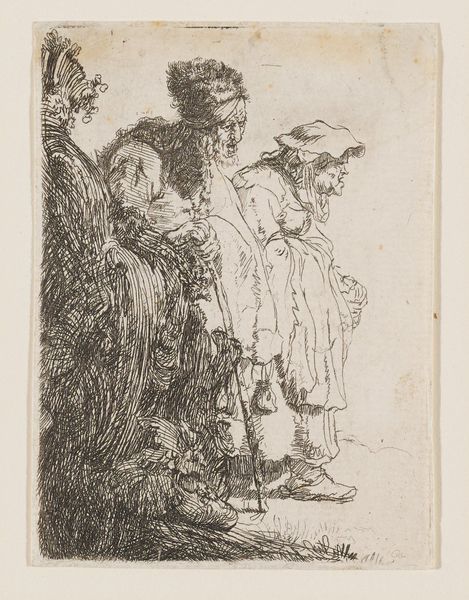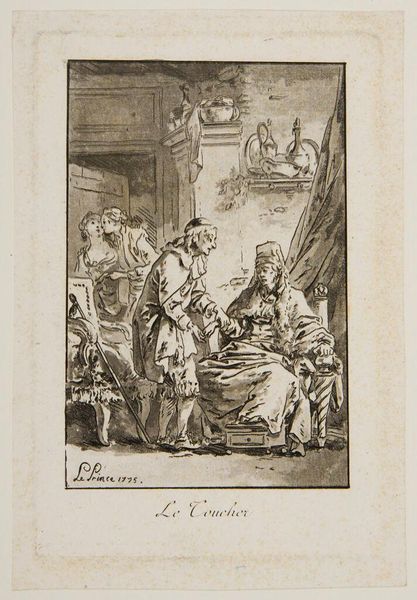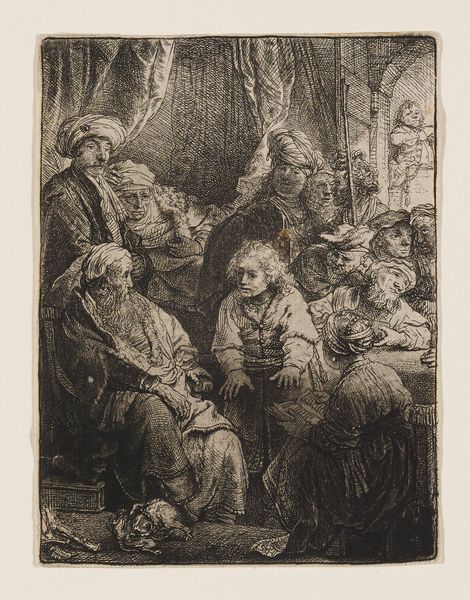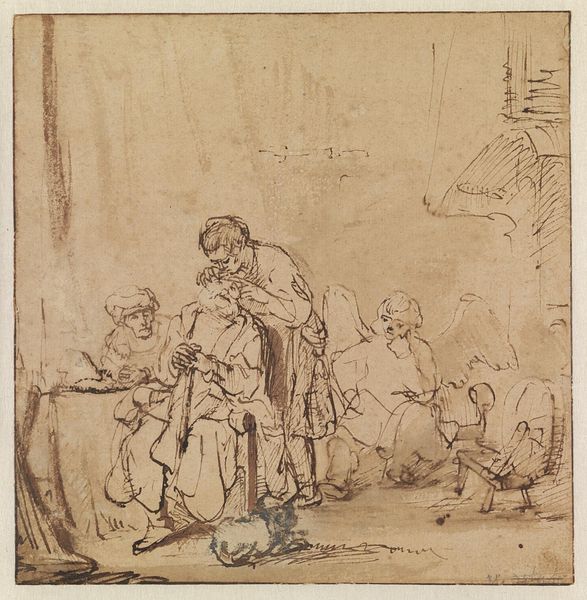
print, etching, drypoint
#
baroque
#
dutch-golden-age
# print
#
etching
#
figuration
#
history-painting
#
drypoint
Dimensions: 6 1/4 x 5 3/16 in. (15.9 x 13.1 cm) (plate)
Copyright: Public Domain
Rembrandt van Rijn created this etching, Abraham Entertaining the Angels, using metal and acid. To make a print like this, the artist would have covered a metal plate with a waxy, acid-resistant ground. Then, using a sharp needle, he would have drawn through the wax to expose the metal beneath. Immersed in acid, the exposed lines would bite into the plate, creating grooves that hold ink. The plate is then inked, wiped clean, and pressed onto paper, transferring the image. Note the economy of Rembrandt's line. With a few deftly etched strokes, he brings depth and tonality to the scene. The varying densities of the lines create the illusion of shadow and light. Look, for example, at the contrast between the heavy lines of the doorway, and the much lighter strokes that describe the figure of Isaac drawing water. In essence, printmaking is a process that democratizes images, making them widely available. In this way, Rembrandt utilized craft to disseminate his artistic vision, blurring the lines between art, production, and accessibility.
Comments
minneapolisinstituteofart about 2 years ago
⋮
Abraham was deeply interesting to Rembrandt, who returned to the subject throughout his career. Here Abraham (at far right) ministers to three travelers, extending every hospitality his 99 years will allow. Led by a rotund, turbaned figure of God, the trio brings a surprising message: Abraham and his aged wife, Sarah, will have a child. Listening in the doorway, the old woman is amazed. Rembrandt departed from Genesis 18 by including Ishmael, Abraham's son born of the servant Hagar. Facing the wilderness with his bow, the boy will soon be exiled, yet live to become patriarch of the Ishmaelites—identified by some as forebears of the Islamic nations. Rembrandt's print may function, then, to suggest a common ground among various faiths born of the same father, Abraham.
Join the conversation
Join millions of artists and users on Artera today and experience the ultimate creative platform.
